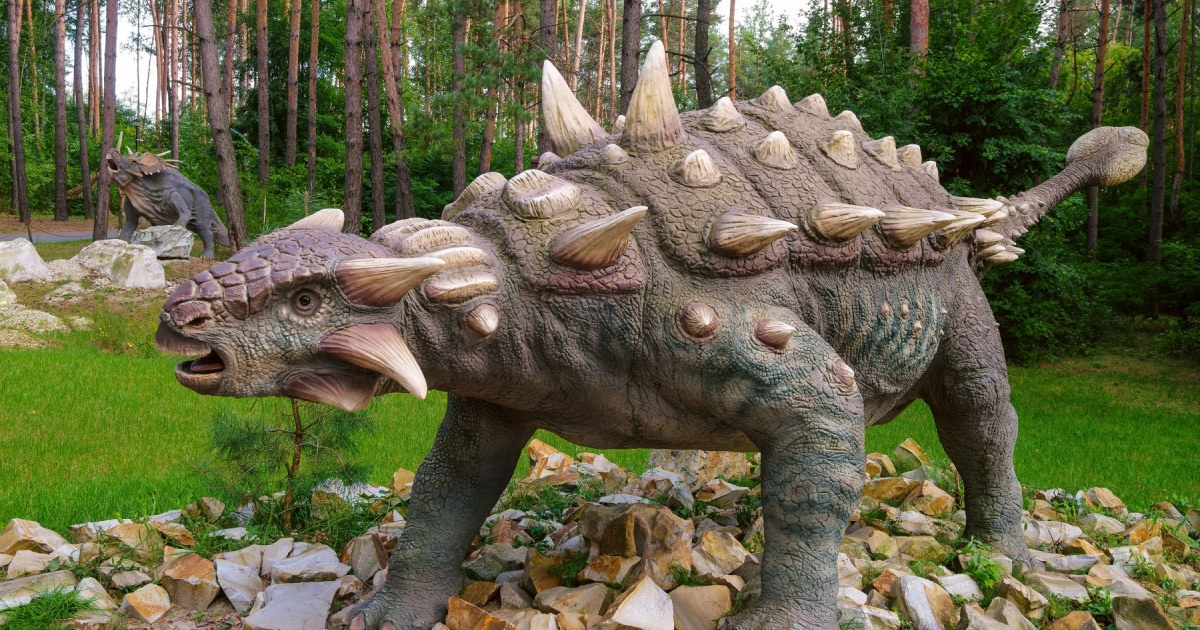
Shutterstock
From our modern perspective, dinosaurs are pretty crazy and unique. They are often massive and generally look almost nothing like the animals we see today. When archeologists look closer at some of the fossils that they find, it becomes clear that there was a huge amount of diversity within the species even millions of years ago.
One great example of this is the Ankylosaur, which is a herbivore that is best known for having armored plates on the body and a bony ‘club’ at the end of its tail. The oldest known fossil of this species, however, looks a lot different.
Rather than just boasting its iconic armor, it actually had huge spikes coming from all over its body, with especially prominent ones around its neck. These spikes reached as much as a meter (3.3 feet) in length, which would have been a very intimidating look for any creature looking to attack them.

Shutterstock
The study that analyzed these fossils is published in the journal Nature, and is changing the way many people look at this famous dinosaur. In a conversation with IFLScience, Dr. Susannah Maidment, who is a study author and London Natural History Museum senior researcher, said of the fossil (which has been dubbed Spicomellus):
“The armour of Spicomellus is unlike that of any other ankylosaur. Other ankylosaurs have bony collars around their necks, but they are mostly flattish bands of bone or flattened pyramid-shaped osteoderms (bony plates embedded in the skin). Spicomellus has four spikes about 1 meter [3.3 feet] long each extending from a robust band of bone around its neck, which also bears a shorter, midline spike and two flattened, tear-drop shaped plates at each end. It’s totally wacky.”
This particular fossil was first found back in 2021. It was located on the African continent, which is the first of these dinosaurs found here. The teams are still looking for more fossils in the same area. They are obviously interested in finding more evidence about this particular dinosaur, but identifying other animals that lived in the same area at the same time could also give them clues as to why this early Ankylosaur developed these spikes. Maidment went on to say:
“We are in the very early stages of exploring the rocks in which Spicomellus was found, so we don’t yet know what meat-eating dinosaurs were living alongside it. We have found some big theropod (meat-eating dinosaur) teeth though, so there were definitely big predators.”

Shutterstock
At this point, however, it is suspected that these large horns weren’t specifically designed to help defend them from predators, or used to attack potential prey. Instead, they could have been used in courtship displays. Maidment explains:
“These long spikes around its neck seem like massive overkill to deter a predator though, so we think that instead they may have been used for display purposes – maybe in courtship displays to attract a mate, or perhaps to deter a rival, a bit like a peacock’s tail or perhaps the antlers of deer.”
This is just one more example of the fact that while a lot is known about dinosaurs, there is still a huge amount that we don’t yet know. The more fossils that are discovered, the better the picture experts will be able to paint.
If you think that’s impressive, check out this story about a “goldmine” of lithium that was found in the U.S. that could completely change the EV battery game.

